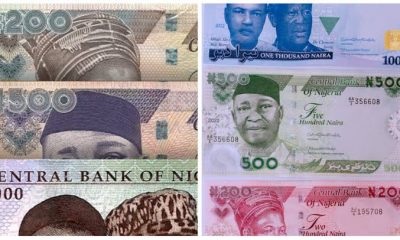News
National Living Standard Survey: Nigerian Households Spent More Than Half of Incomes, N22.9 Trillion Total on Food and Agro Products In 2019

The National Living Standard Survey (NLSS) was part of an effort of the Federal Government of Nigeria to provide statistical information on welfare and poverty trends in the country. The survey was designed to collect information needed to identify and classify target groups and provide basic welfare indicators for monitoring poverty alleviation programmes.
Between September 2018 and October 2019, the National Bureau of Statistics conducted the latest round of the NLSS after a decade. It is representative at the state level with a sample size of 22,110 households, focusing on increasing the understanding of living conditions of the Nigerian populations.
According to the National Bureau of Statistics in their latest National Household Consumption Survey, the total household expenditure on food and non-food for 2019 was N40,207,388,459,367 (was N21,620,601,543,613.90 in 2009/10). Of this total, 56.65% (60.2% in 2009/10) of total household expenditure in 2019 was spent on food with a balance of about 43.35% (39.8 % in 2009/10) spent on non- food items.
Food consumed outside the home, followed by transportation costs and starchy roots, tubers and plantains were responsible for the largest proportion of household expenditure representing a combined 24.16 percent of total household expenditure in 2019.
The home, starchy roots, tubers and plantains, rice, vegetables, fish and seafood, grains and flours in that order were the top food items households spent money on in 2019 accounting for a combined 59.19% of food expenditure and 33.53% of total household expenditure on food and 24.8% of total household expenditure.
Household expenditure on non-food items on the other hand were directed as aforementioned mostly at transport, health, education and services (which includes information technology and communication equipment as well as things like insurance, financial services and so on), rent and fuel and light, accounting for a combined 79.40% of non-food expenditure.
The consumption pattern of a household is the combination of qualities, quantities, acts and tendencies characterizing a community or a human group’s use of resources for survival, comfort and enjoyment. Of course the type of food and non-food items consumed, vary from region to region. Consumption patterns normally contribute greatly to the social and economic policy of the country.
For a developing country like Nigeria, the consumption pattern is skewed towards food i.e. food is higher than the non-food items. In most developed countries, it is the opposite, where the consumption pattern is skewed towards non-food items. The more developed a society becomes, the less it spends on food and the more it spends on nonfood items. Lagos is a clear indication of a state with an emerging economy.
Follow us on Instagram @sofovilla | Follow us on Twitter @sofovilla | Like our page on Facebook via @sofovillamedia









